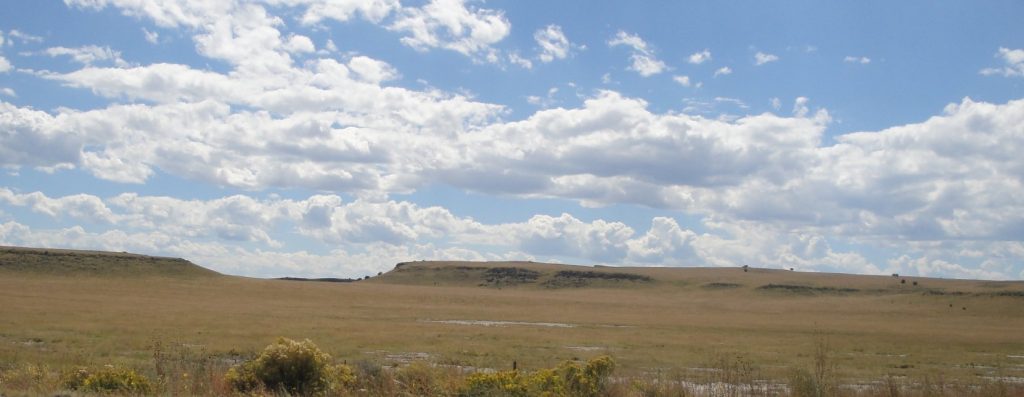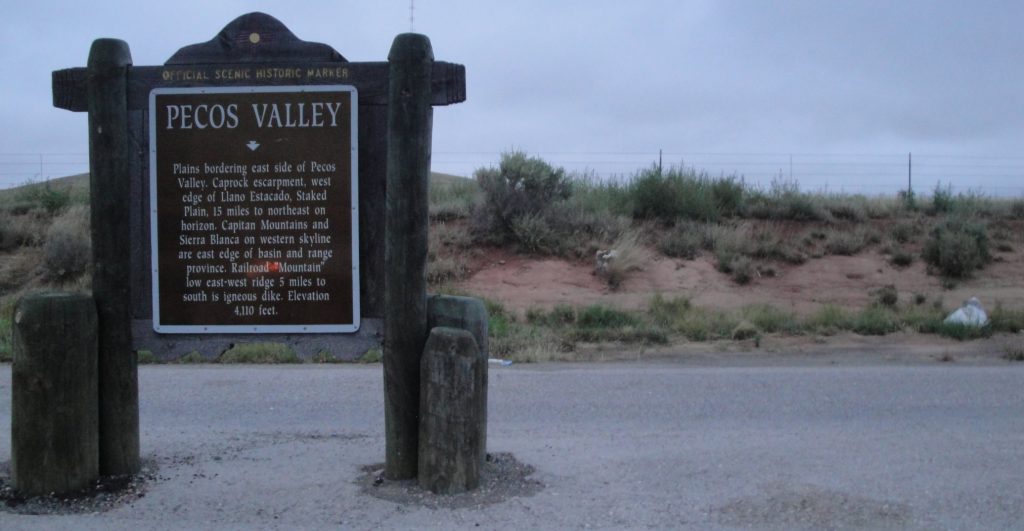
I needed to get maximize my daylight so I left Portales just before the sun came up and for about an hour and a half I drove through some of the most monotonous landscape possible, sometimes made less appealing by the early morning gloom, I suppose. Sometimes there was little evidence of active human occupation. At other times you could see where people had moved away.
US Highway 60 runs through what was the edge of the Dust Bowl in the 1930s. The countryside had a denser population back then than it does now. This is a good thing. The land here gets irregular rainfall. In some years there is enough to temp people to plow up the sod and plant row crops. That is what happened right after World War I, when this area was booming with high war-time prices for wheat and other crops. A vicious cycle set in when prices came down off their highs. Farmers needed to plow up more grassland and grow more crops to make the same money, which they often needed to pay off their mortgages and the equipment they invested in during the boom time.

An agricultural method had been developed in the humid Eastern U.S., where rain is more consistent and where the wind doesn’t blow so hard or steadily. Something you notice even on a short trip is that the wind is persistent as a toothache out here.
The grass and prairie vegetation had protected the soils from the wind for around ten thousand years, ever since the warming following the last ice age. Prairie vegetation is adapted to the wet-dry cycles of nature and to the wind and fire that is endemic to the high plains. Most of the plants are perennial. They send down deep and interwoven roots. When the dry weather comes, these roots sustain the plants and hold the dirt.

The grassland ecosystem had created deep and rich soil over the course of literally thousands of years. During the wet decade following World War I, farmers essentially mined and used up this soil in an unsustainable way. They didn’t understand it and some thought the rain was natural or permanent. Many were probably surprised that nobody had discovered the bounty of the land before. The hotter-drier cycle set in again in the 1930s. Soil, exposed to the wind by plowing and harvesting just blew away, leaving some farms almost bare of topsoil and other buried in the stuff. This was the environment when thousands of refugees headed out. You read about that in John Steinbeck’s “Grapes of Wrath” or in a more recent non-fiction book called “The Worst Hard Time.” (I studied the dust bowl years when I was going to Iraq, since the dust storms there are also partially man-made catastrophes. It formed the basis of some of my slow-moving but grandious dreams)
We take better care of the soil today. During the 1930s farmers and government folks (like the CCC) planted windbreaks of trees. FDR had a special fondness for tree-planting. Of all his great and not so great traits, that is the one I find personally most appealing. Farmers now use low-till or no-till methods that leave the soils more intact and leave cover vegetation on the surface during the off-seasons. Years of experience has taught us that there are some grasslands that just cannot be made to produce any crops besides maybe hay and some that cannot-should not even do that.
An old farmer told me that this year was a good and a wet year on the high plains. He said that the crops, like the milo/giant sorghum were growing well and that the harvests were good. But today we know that this wet year will sooner or later – probably sooner – be followed by some dry ones. And we know that we need to keep and protect the environment for those times. Dirt is the basis of civilization and if you don’t care for the soil, there really is nothing left for you.
The picture up top in along US 60 in Western NM. The one below is up the hills a bit in the more central part of the state. The bottom picture explains itself.
